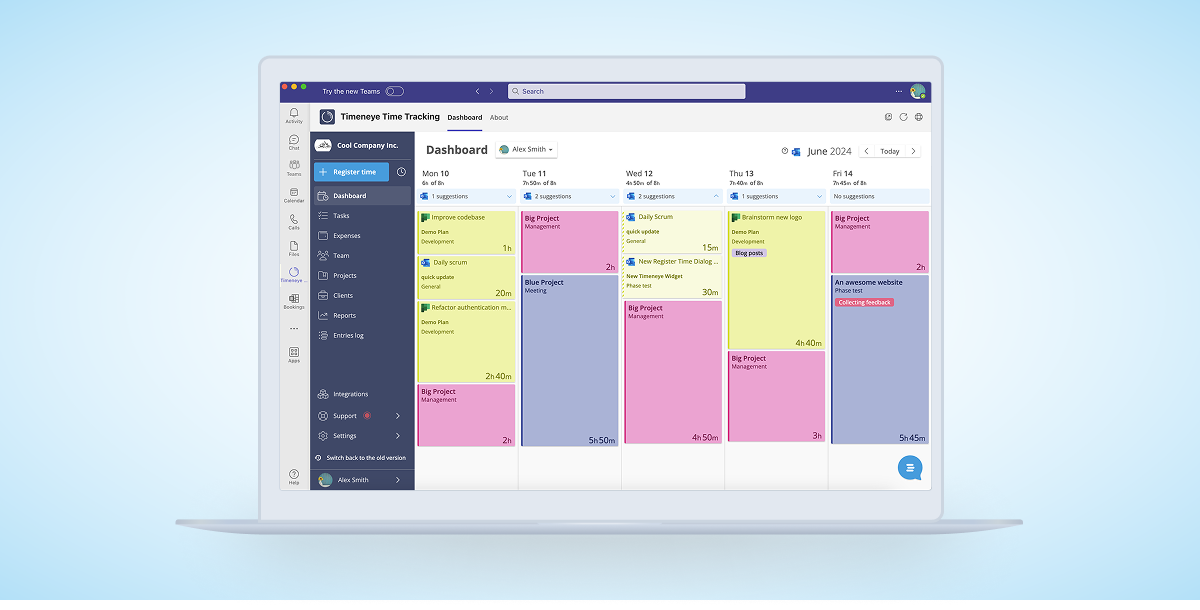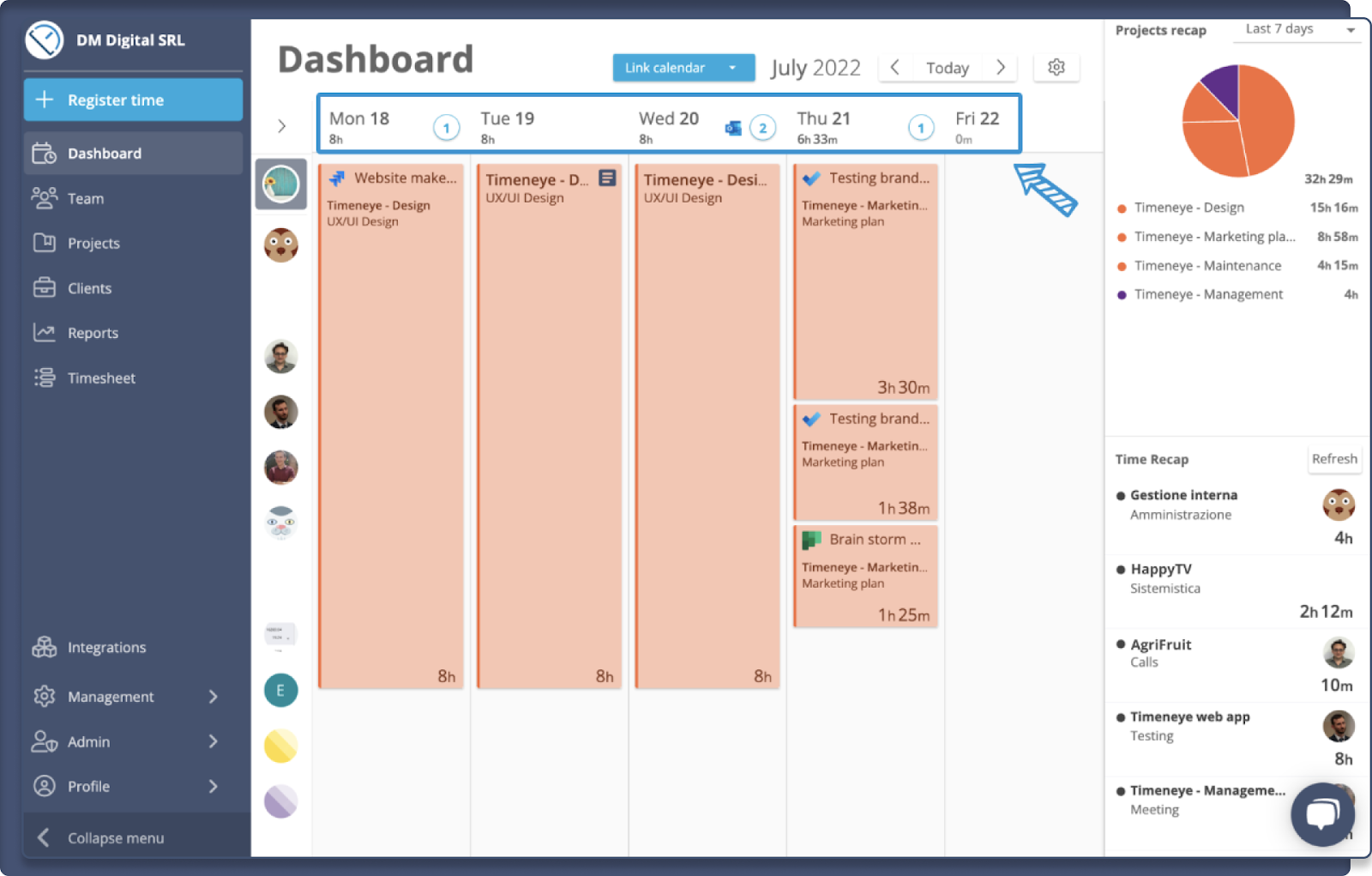What are SMART Goals and How to Set them
What are the SMART goals and how can they increase your productivity? Here're our Time Management tips to make you set them properly!


From time-saving tips to how to motivate your team: here are 5 effective ways to increase productivity and achieve your business goals!
When they started their business, companies, small businesses, and freelancers had a clear vision of what they would offer their clients and how to improve their lives thanks to a product or service. Once decided, they hired people and started producing.
To reach the clients’ necessities and adequately develop the products in the smallest amount of time, managers focused on productivity, the best methodologies to do so, and, consequently, how to reach talents and make them stay in the company.
These give importance to business KPIs, pay attention to work-life balance, and create a happy and stimulating workplace.
As stated in the following Forbes article, happier employees “are up to 20% more productive than unhappy employees. When it comes to salespeople, happiness has an even greater impact, raising sales by 37%”.
Productivity is intensely tight to motivation and happiness at work.
To increase productivity is essential to have a plan knowing that productivity takes time, patience, and a lot of work in terms of improvement. The effort must first come from top managers who need to prioritize activities, know which ones lead to greater productivity, have a mid-long-term vision, and, last but not least, be able to build a friendly environment.
This article will show the best and most effective ways to increase productivity at your office and for your remote teams, hybrid teams, and even at home.
To elaborate a detailed and insightful productivity plan, it is vital to know what it is for, how a greater level of productivity might help the company or increase the profits and what activities allow it.
Managers must know that working on only some business activities can increase productivity.
Indeed, at first, the goal is to focus on the activities that can impact the business and generate profit.
Later on, the managers can decide to also focus on other business activities and increase the level of productivity for them too.
Project management should remember that the planning has to be clear, measurable, and doable.
You have probably heard of SMART goals, an acronym that stands for:
Smart goals theorization is to be addressed by Peter Druckers’ that in his book “The Practice of Management,” wrote about Management by objective (MBO), which is given importance to the fact that employees’ objectives need to be aligned with the organization’s goals.
When managers aim to increase productivity, it is essential to set intelligent goals since an activity to succeed has to follow a methodology
Increasing productivity is a daily task, and it cannot be limited to the end of the year, before the annual financial report, or when data shows that incomes are decreasing.
Increasing productivity is a day-to-day activity that needs to be taken care of and monitored.
Installing reminders, using a calendar, and relying on project management and time trackers help managers keep an eye on increasing production.
Timeneye, our time tracking software, helps managers and employees monitor their prioritized activities regarding increasing productivity.
With Timeneye, you can open the projects you are working on to boost productivity and divide them into phases. This feature helps you to see better how they are going and if they are following the plan.
Timeneye also helps you to remember the things you need to focus on, thanks to the so-called “Suggested Entries.” An Entry is a section in the workspace where the time data gets stored, and it is possible to export it in detailed timesheets.
Your Timeneye web app starts to learn from your entries addressing your activities to a daily routine, and, in this way, it pops up a suggestion in your calendar dashboard.
If you want to avoid Timeneye helping you with Suggested Entries, you can easily modify them from the Register Time dialog.

Give Timeneye a try and sign up for your 14-day free trial
As our first bullet point mentioned, goals are the core of every project and objective, even increasing productivity.
For this reason, keeping an eye on progress or eventual stops is essential after setting clear and measurable goals.
If something needs to be going differently than supposed to, there is still room for improvement if managers and employees check the status of the activity while still working on it and not at the end of the process.
Losing focus can happen whether you work at the office, at home, or in hybrid mode.
For this reason, it is essential to try to avoid or, at least, reduce all of those activities that drain time.
Social media is one of those activities in which people find themselves surprised when they spend half an hour just scrolling feeds.
We pick up our phones to take a brief break and end up scrolling feeds for longer than we expected.
Social media are usually considered “junk food” for our brains since the satisfaction is immediate, but there is no nutrition.
It is a perfect metaphor able to describe how easy it is to waste time at work looking at cute cat videos while, instead, what we would need is to leave our desk (and sometimes even our office/home), take some fresh air while going to the closest bar.
Yeah, it takes at least 15 minutes to do so. But these minutes are worth it if we come back to work with more motivation and a free mind.
It is not a compromise to scroll our social media for 5 minutes without getting any relief; it is just a waste of time.
Time-wasting activities usually happen in those companies that lack organization and just go with the flow.
Managers need to figure out what to expect from each department; otherwise, employees face frustration and a lack of understanding. The tendency to postpone and not do things happens to be expected in these situations since employees are scared to make mistakes or do not know how to face the blurred activities that they got assigned to do.
It would be best to avoid postponing and using social media at work, but employees cannot prevent some activities. Still, they can benefit from reducing or replacing them with something more practical.
Emails are a time-consuming activity that can even drain a significant amount of time and hours.
Answering emails can take hours and intrude on all other activities that need to be done during the day.
A way to deal with many emails is to list them based on priority and reply to the urgent ones when we read them. After that, it is essential to start working on the activities of the day, and when we feel the need to change tasks since we are losing focus, we can answer the important ones.
When we have some time left, we can focus on answering the other emails that are either urgent or not important.
Answering emails is time-wasting, and companies cannot rely on the employees’ ability to manage it. Managers should contribute to building a culture where emails are sent when necessary and not communicate things that can wait for the daily or weekly companies meeting.
Meetings! Meetings are one of the most time-wasting activities, and managers do not fully realize it.
It usually happens that all employees are invited to meetings even when they do not focus on the activities that the panel talks about and even when they can’t contribute or apport some sort of benefit to the conversation.
For this reason, meetings should be specific, involve only the right employees, and last up to one or even 30 minutes, as essential managers stated.
As stated before, motivation is a great asset when discussing productivity.
Managers should not think about productivity as something expected in exchange for a salary; many factors might influence it.
First, managers must remember that making a motivational environment where people can find their way to be productive has nothing in common with a competitive one when productivity is prized while a lack of it punished.
A motivational environment is where employees feel free to express their best way of working. Some find a more significant focus at home, surrounded by silence, while others find fuel in working with others, perhaps also listening to some music. Leaving to your employees the decision about where to work not only benefits them in terms of happiness, but it also benefits the company since employees perform better and produce more with less effort.
It is also essential to be open in communication and ask the employees what activities they like and others they find more challenging. In this case, balancing and assigning employees the activities they want the most is crucial.
Promotions and increases in salary are essential assets to increase motivation. Still, they also have to be followed by a working environment of collaboration, freedom to speak, and, for the employees, to express their best way to perform without feeling wrong for, for example, not going to the office, taking breaks outside the office or listening to some music.
There is no magic and universal recipe for increased productivity. For this reason, managers should rely on methodologies, and productivity tips, such as these, while also developing emotional intelligence and being good at team management to better understand how to communicate, listen and help their employees at work.
Once they have done that, it will be easier to increase productivity and company entries!
Here are two options to kickstart your journey toward enhanced productivity:
1) Try Timeneye for free. If you’d like to see Timeneye in action and possibly test it with your team, you can start your free trial today.
2) Schedule a demo session with us, where we can show you around, answer your questions, and help you see if Timeneye is the right tool for your company.
What are the SMART goals and how can they increase your productivity? Here're our Time Management tips to make you set them properly!
Several countries have been trialing the 4-day workweek. The tests resulted in increased productivity. Let's see the pros and cons of the 4-day...
Enhance workplace productivity with time batching. Learn how to categorize tasks, allocate time blocks, and maintain a disciplined schedule for...